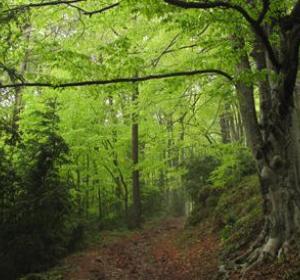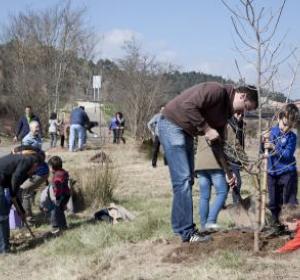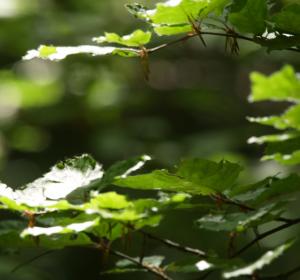Forest management
Forests produce many direct benefits (wood, fruit, firewood, game). And they are also very profitable indirectly since they act to modulate the water cycle. Thus, they prevent erosion, contribute to keeping the air composition stable and serve as a refuge for biodiversity.
It is important to learn about and properly manage forests in order to adapt them to a changing climate and guarantee their future.
Today, Catalan forests are expanding. Because of the gradual abandonment of lumbering, which is not as profitable as it used to be in the past, forests have encroached on former crop fields and covered fields that were used as pastureland until recently. This entails the appearance of continuous forest stands which are barely cared for and generate a high fuel load.
Furthermore, in recent times, these forests have become prized spaces of leisure activities accessible to everyone. Therefore, it is important to know about and properly manage the forests to prevent potential disasters and make the most of them.
In the Pyrenees, specifically in the Pallars Sobirà region, some forests have not been felled for over 100 years. In order to guarantee the survival of these “old forests”, the Foundation has gradually created 25 forest preserves. Each of the preserves, which total 141.8 hectares divided among the townships of Alins, Esterri de Cardós, Farrera, Llavorsí and Vall de Cardós, have a different stipulated timeframe, ranging from 20 to 40 years.
They are old sub-Alpine forests of Scots pine, mountain pine and fir trees which have scarcely or never exploited for lumber, where monumental specimens up to 300 years old (!) can be found. They are also the habitat of threatened and scarce species such as the wood grouse, the boreal owl and the black woodpecker, and many of these shelters where they live are part of the Alt Pirineu Nature Park.
At Vall d’en Bas, the Foundation manages part of the Fontanils estate, specifically 132 hectares of it. This estate is the home to a 4,5 hectare forest preserve meant to conserve old forest and allow it to evolve naturally.
The fact that lumber has not been extracted from it for almost two centuries means that today Fontanils boasts a diversity and ecological functioning quite similar to a mature forest with hardly any changes stemming from human use.
An initiative which aims to recover the oak and holm oak forests in the wooded zones within the Mediterranean and sub-Mediterranean climate of Catalonia to prevent fires and manage and improve the landscape and environment.
The actions include planting 100 oaks and holm oaks to create a meadow in Cal Cuques near Manresa.
A meadow is an area with trees, though not densely planted, and it is meant to be used primarily as pastureland. Meadows with oaks and holm oaks are valuable because these trees make acorns, which are highly nutritious. On the other hand, in the Pla de Bages, a region where pine trees dominate, a meadow with oaks and holm oaks can increase the biodiversity and landscape and recreational value of the area, while also acting as a firebreak because it is much less flammable than pine trees.
In the area around the Santa Pelaia hermitage, 850 black pine saplings and 150 fruit tree saplings were gotten from a nursery near the repopulation area in order to ensure that they were properly acclimated.
In 2008, the Foundation worked in conjunction with Catalunya Ràdio to hold a fun, grassroots tree planting in 35 forests in 35 locations around Catalonia. More than 40,000 people participated, with more than 1,000 volunteers, and 70 hectares of land were reforested.
This planting was held as part of the United Nations’ The Billion Tree Campaign.
This is an initiative in which the Foundation, working in conjunction with BOSCAT and the Tres Castells association of forest owners, planted 10,000 saplings in an area in the township of Balsareny (Bages) which had been deforested by a fire in 2005.
Specifically, the action was conducted in the Serrat del Maurici estates, which occupy a total of 10 hectares. Approximately 10% of the trees were planted using a Waterboxx, an innovative system which allows the sapling to be watered for the first two years after it is planted.
On the banks of the Llobregat River, there is an 800-metre route where the nearby residents often stroll and spend their free time. Part of this path has been repopulated with trees (poplars, willows, elms and downy oak) and shrubs (elderberry, dogwood, laurustinus and barberry), creating a riverine forest which enhances the biodiversity in the area. With this action, which enlisted the participation of almost 300 people, around 400 specimens of these tree species were replanted.



